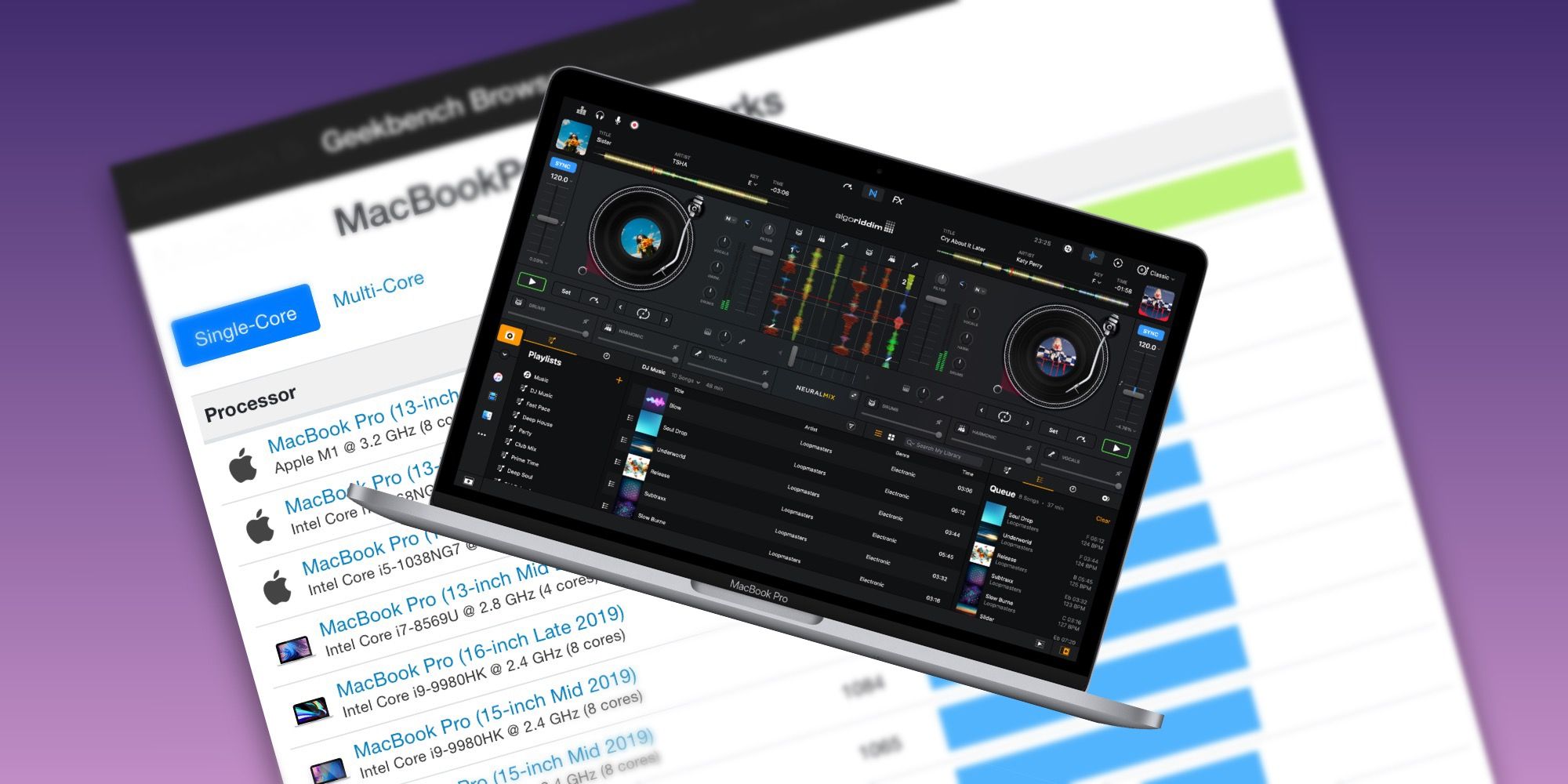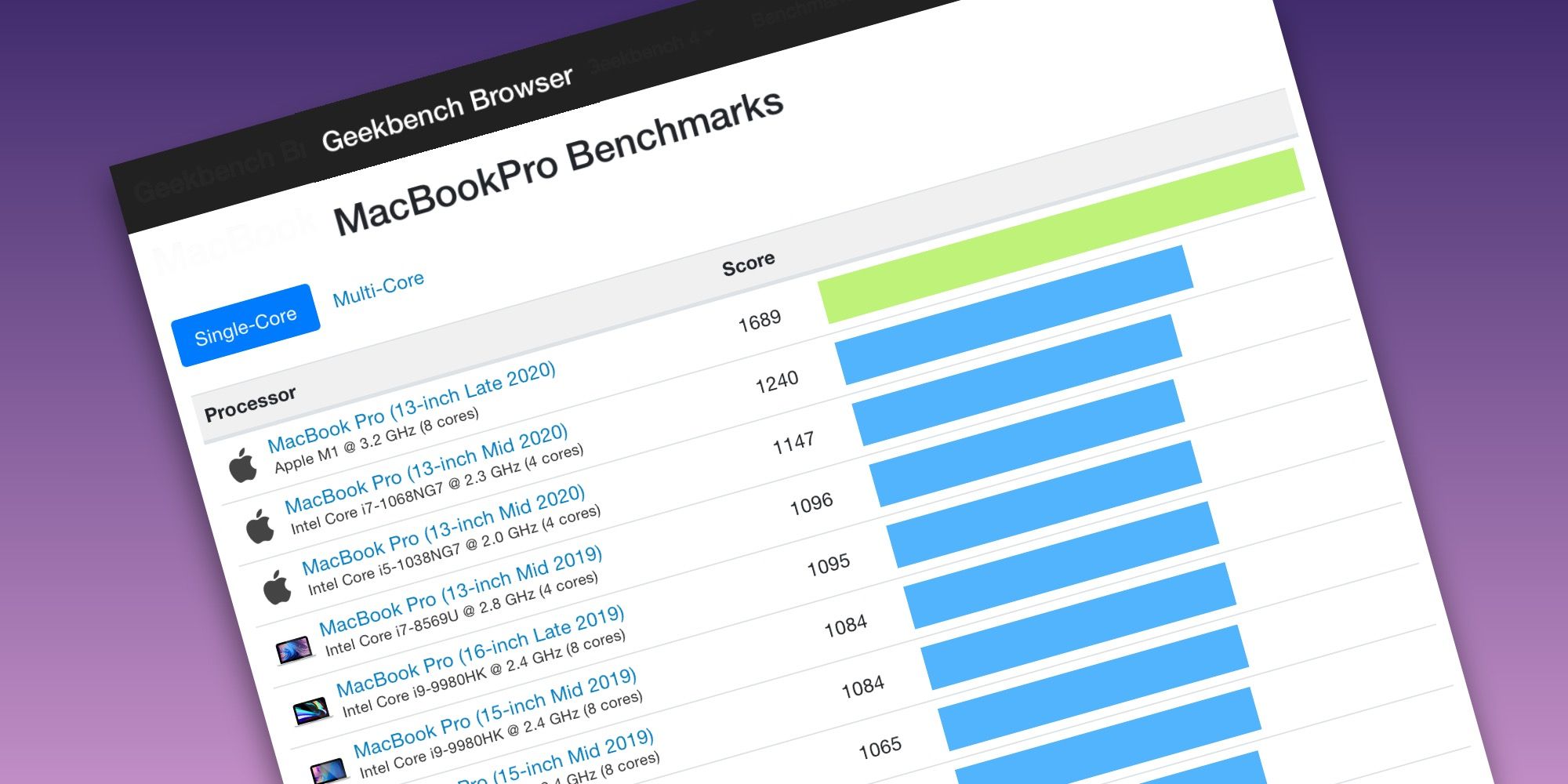Early benchmarks of the MacBook Pro suggest that Apple's M1 chip has a big lead over the competition. While the charts show impressive benchmark performance, real world experience may be more complicated, but these results can help anyone considering a purchase to better understand what's on offer. For example, the significance of single-core, multi-core, and compute scores affects speed within apps in different ways, depending on the nature of the app and whether it is coded to take advantage of certain features.
Geekbench is a cross-platform benchmarking tool that’s available for macOS, iPadOS, iOS, Windows, Linux and Android. Since it covers such a wide range of devices, it’s useful for broad comparisons, particularly in a time when mobile processors are beginning to challenge laptop and even desktop class CPUs. In the first few versions, Geekbench only tested the CPU, but more recently, its Compute benchmark is included. Compute scores test GPU performance with image processing, computational photography, computer vision, and machine learning workloads. Allowing a more balanced look at real-world performance.
The recent Geekbench charts for Mac show the M1 leading all other processors in single core performance, with the two actively cooled M1 computers leading the fan-less design, with a score of 1689. The closest Intel Mac is the 27-inch iMac that launched earlier in 2020 with an Intel Core i9–10910. The Core-i9 scored 1251, 74-percent the speed of the M1 when using one CPU core. The MacBook Pro falls a little behind the Mac mini in multi-core, with a score of 7288, but is beaten by the Intel iMac which reached 9021. This means multi-core turns the tables and the M1 drops to 81-percent of the top Intel Core-i9 processor. However, the iMac is a desktop computer, making an Intel MacBook Pro a better comparison.
Fastest MacBook Pro?
According to the Geekbench tests, the 13-inch M1 MacBook Pro challenges the top Intel iMac. That means it should beat the 13-inch Intel MacBook Pro easily and it does. Single-core tests place the M1 at 36-percent faster and multi-core shows a huge 61-percent higher score. This is very impressive, but it’s important to note that amazing benchmark performance doesn’t always equate to best real-world experience. The benchmarks shared on the Geekbench platform charts measure CPU speed using a variety of tests, but run for seconds or minutes, not the hours on end that computers are typically used for. The M1 is expected to run cooler than the Intel chips, but how heat and extended loads affect Apple’s new processor is still unknown.
Another consideration with a computer is the GPU, which is used for gaming, 3D modeling and rendering, video and image processing, among other things. Modern computers use the graphics processor heavily because it can offer tremendous speed for parallel tasks. Apple claims the M1 GPU is up to six times faster than Intel’s integrated graphics. Digging deeper into the Geekbench results and the Compute scores, OpenCL benchmarks reveal the M1 13-inch MacBook Pro scoring 18751, while the Intel MacBook Pro with Iris Plus Graphics 645 reached 7888. The M1 achieved a score 2.4-times greater than Intel graphics. For the 13-inch MacBook Pro, that pretty much says it all. Unless doubling the RAM to 32-gigabytes has a significant impact on performance, the M1 is likely to win most every speed test.
However, which MacBook Pro is the fastest hasn’t been settled yet. The 16-inch model offers discrete graphics and that is where the story changes. According to Geekbench Compute tests, a 16-inch MacBook Pro with AMD Radeon Pro 5300M easily passes the M1 with a score of 26781. The first Apple Silicon GPU achieves just 70-percent the speed of a dedicated GPU in the 16-inch MacBook Pro. Comparing the $1,299 13-inch M1 MacBook Pro to the $2,399 16-inch Intel version is unfair, but simply proves a point. Apple M1 processors are super fast and very impressive, but haven’t dominated the market at the top end yet.
Source: Geekbench


